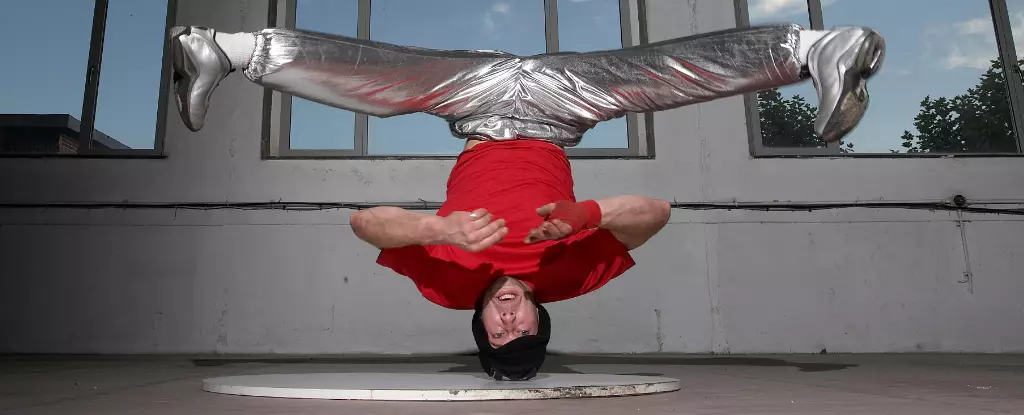Breakdancing, a dynamic and intricate dance form, has garnered a dedicated following since its popularity surged in the 1980s and 1990s. However, beneath its vibrant exterior lies a host of physical challenges and injuries that practitioners face, particularly when it comes to the headspinning techniques employed in performances. One of the most peculiar side effects of this sport is the “headspin hole,” colloquially referred to as “breakdancer bulge.” This condition, along with other potential injuries, is becoming a focal point of discussion in both medical and dance communities.
The term “headspin hole” refers to a cone-shaped mass that can form on the scalp of dancers who frequently engage in headspinning. A 2024 medical case report highlighted a breakdancer with 19 years of experience who experienced this unusual phenomenon. It is characterized by a thickening of the epicranial aponeurosis, a layer of connective tissue that runs from the back to the front of the skull, as well as an increase in fat layer beneath the skin. This reaction is the body’s way of creating a protective barrier against the repetitive stress and trauma inflicted during high-energy spins. Approximately 30% of breakdancers report experiencing hair loss and inflammation—a testament to the physical toll that this art form can take on the body.
Interestingly, this type of injury is not unique to breakdancing alone; it serves as a reminder of how the human body adapts to protect itself from harm. Similar protective measures occur in other areas where friction is commonplace, leading to calluse formation on hands and feet from activities like weightlifting or manual labor.
The Broader Range of Breakdancing Injuries
While the headspin hole is a standout injury among breakdancers, it is far from the only one. Breakdancers are notably prone to various musculoskeletal injuries, particularly in the wrists, knees, hips, ankles, and elbows. Techniques like the “windmill” and “backspin” can result in bursitis, an inflammation affecting the fluid-filled sacs around the spine’s vertebrae.
Moreover, more severe injuries can occur, underscoring the high-risk nature of the sport. One dancer reportedly fractured their neck, raising the stakes surrounding safety in breakdancing. Stories like that of Ukrainian dancer Anna Ponomarenko further reflect the dangers involved. Ponomarenko suffered from pinched nerves that initially caused paralysis. Fortunately, she made a remarkable recovery and is set to represent her nation in the upcoming Paris 2024 Olympics, illustrating both the risk and resilience inherent in the sport.
Just as in other sports, the implementation of protective equipment can serve to minimize injury risk in breakdancing. While many dancers traditionally perform without any protective gear, an increased understanding of these injuries prompts a reconsideration of safety practices within the community. Wearing padding or headgear could alleviate some of the impact faced during strenuous moves, thereby preserving the dancer’s health over time.
Despite the allure and excitement that breakdancing provides, there remains a crucial need to develop safety protocols and preventative measures to ensure long-term health for practitioners.
Similarities in Childhood Conditions
Interestingly, breakdancers aren’t the only ones who experience cone-shaped heads; newborns can also be born with misshapen skulls due to their passage through the birth canal. Conditions such as caput succedaneum, where fluid accumulates under the skin, may dissipate within days. Other scenarios involving vacuum-assisted deliveries can lead to various head shapes and sizes, including larger lumps or bruising that may take weeks or months to resolve.
Typically, these infant head shapes normalize as the child’s skulls develop and fuse correctly after the rapid initial growth in the brain. In rare instances, craniosynostosis may occur, leading to early fusion of cranial plates that requires surgical intervention if detected.
As breakdancing continues to evolve as a respected form of artistic expression and will be featured in major global events, including the Olympics, it is essential to recognize the physical risks that accompany it. Understanding the “headspin hole” and other injuries that breakdancers can face fosters a greater appreciation for the sport—not merely as a performance art but as a physically demanding endeavor that requires care, awareness, and adequate safety measures. By addressing these significant health considerations, the breakdancing community can simultaneously celebrate its rich culture and protect the wellbeing of its dancers for generations to come.


Leave a Reply